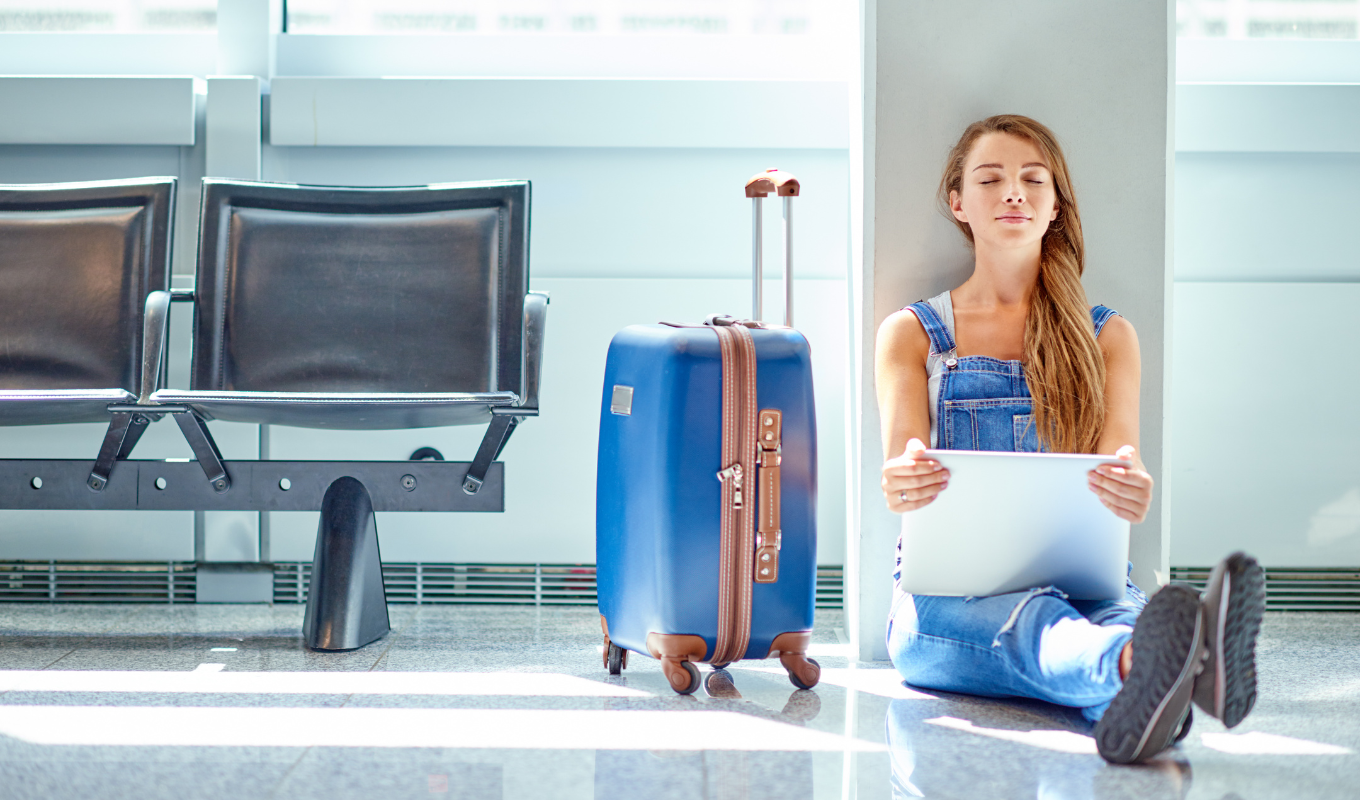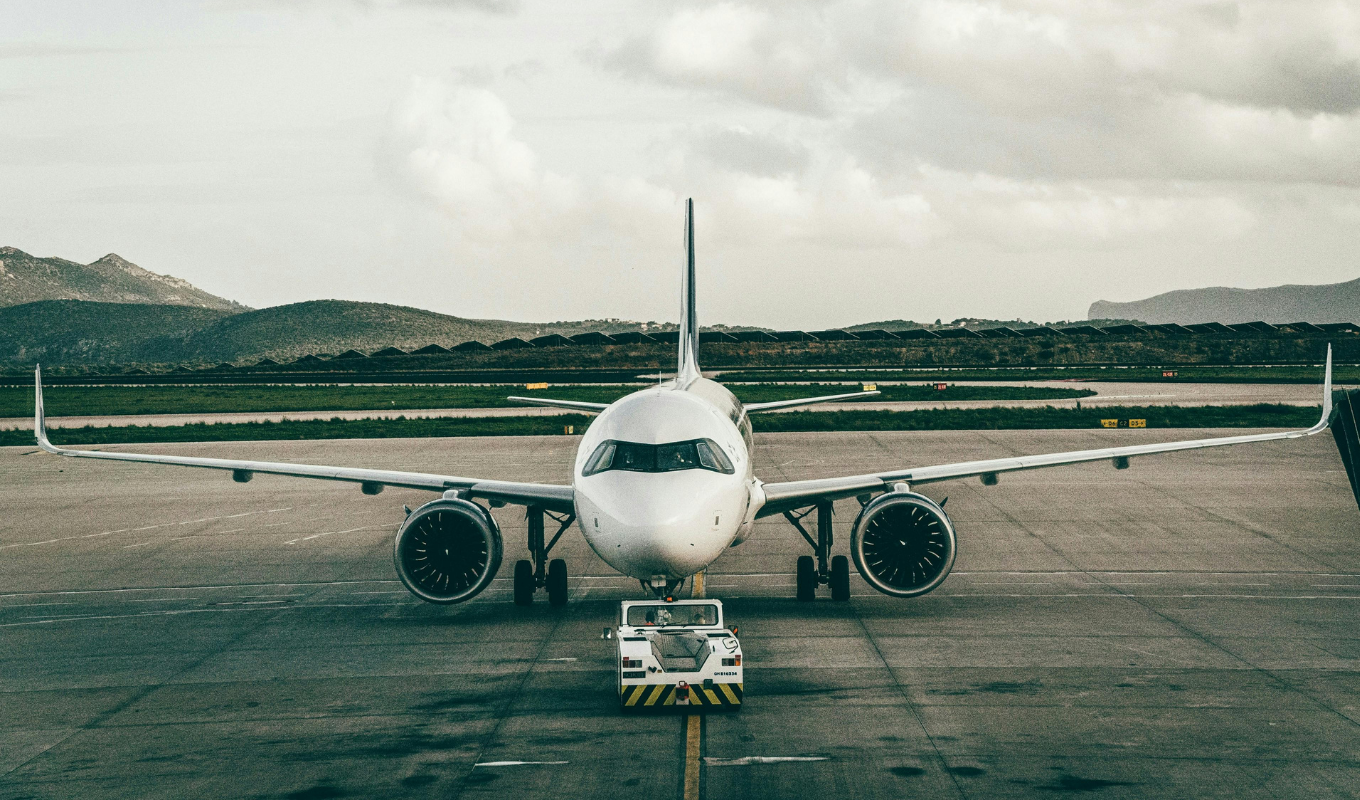When planning your trip, the choice between direct flights and layover flights boils down to time, cost, and comfort. Here’s the quick breakdown:
- Direct Flights: Faster, more convenient, and ideal for tight schedules or stress-free travel. However, they cost around 25–30% more on average.
- Layover Flights: Cheaper upfront (up to 30% less) but come with hidden costs like meals or hotels during long connections. They also add travel time and potential hassles like missed connections or lost luggage.
Quick Comparison
| Factor | Direct Flights | Layover Flights |
|---|---|---|
| Cost | Higher (10–30% more) | Lower upfront, hidden costs |
| Travel Time | Shortest possible | Several hours longer |
| Comfort | High – fewer hassles | Lower – more fatigue |
| Risk of Delays | Minimal | Moderate to high |
| Best For | Tight schedules, families | Budget travelers, flexibility |
Key takeaway: Choose direct flights for speed and simplicity, or layover flights if saving money is your priority and you have a flexible schedule. Always calculate the total cost, including hidden expenses, to make the best decision.
Cost Comparison: Which Option Costs Less?
Layover flights often come with a lower ticket price upfront. On average, direct flights are about 25% more expensive than those with layovers, but the added convenience comes at a cost. Let’s break down the financial trade-offs between these two options.
Direct Flights: Paying More for Convenience
Direct flights command higher prices because they save travelers time and hassle. The price difference typically depends on the route. For short-haul flights (under 3 hours), direct flights tend to cost 10–20% more. On long-haul routes (over 6 hours), the premium can jump to 20–30% or even higher during peak travel seasons.
For instance, a nonstop flight from New York to Los Angeles might be priced at $400, while a one-stop alternative could cost $300. That’s a $100 difference for saving an hour or two of travel time. Airlines justify the higher cost of direct flights by charging for prime slots and meeting the demand for quicker travel.
Layover Flights: Cheaper Tickets, Hidden Expenses
Layover flights usually start with a lower fare, but the savings can diminish when you factor in additional costs. Expenses like meals, overnight accommodations (ranging from $80 to $200), and local transportation can quickly add up, sometimes making the total cost higher than a direct flight.
Using the same New York to Los Angeles example, a layover flight might seem like a bargain at $300. But if you need to spend $20 on a meal and $120 on a hotel room during the layover, your total could climb to $440. In this case, the direct flight would actually be the cheaper option.
However, shorter layovers with minimal connection times can help you avoid these extra costs, allowing you to keep the savings from the cheaper ticket.
Cost Comparison Table: Direct vs. Layover Flights
| Route Type | Direct Flight Premium | Example Costs | Potential Layover Extras | Best Choice |
|---|---|---|---|---|
| Short-haul (<3 hours) | 10–20% more | Direct: ~$230, Layover: ~$200 | Minimal (~$10–30 for food) | Layover flights often save more |
| Long-haul domestic | 20–30% more | Direct: ~$400, Layover: ~$300 | Moderate (~$20–50 for meals) | Depends on layover duration |
| International | 25–30%+ more | Direct: ~$800, Layover: ~$600 | Higher (~$50–200 for hotels/meals) | Total costs should be calculated |
| Peak season | 30%+ more | Direct: ~$600, Layover: ~$400 | Variable | Layover flights can offer better value |
Direct flights provide speed and convenience, but they come at a premium. Layover flights, on the other hand, may seem cheaper initially but can incur hidden costs that eat into your savings. To make the best choice, it’s crucial to look beyond the ticket price and consider the total cost of your trip.

Travel Time and Ease of Use
When deciding between direct flights and layovers, the total travel time and complexity of the trip play a big role in shaping your travel experience. Understanding how each option affects your schedule can help you make a choice that aligns with your priorities. Let’s break down the travel times and ease of navigation for both types of flights.
Direct Flights: Quick and Straightforward
Direct flights are a major time-saver. You board your plane, settle in, and head straight to your destination without dealing with plane changes or airport transfers. This can save you hours compared to layover flights, especially on long-haul routes. For instance, traveling from India to the USA on a layover flight can take anywhere from 22 to 38 hours. If you’re on a tight schedule, traveling with kids, or simply prefer a more predictable journey, direct flights are often the best choice.
Layover Flights: Flexibility but Longer Journeys
Layover flights offer more scheduling options but come with longer travel times. Depending on the connection, layovers can range from an hour to an overnight stay. Each stop adds complexity, and international layovers may require you to go through immigration and customs, further extending your trip. Even domestic flights can involve tight connections, with some requiring as little as 30 minutes between flights. Reliability is another factor – only 77% of U.S. domestic flights arrived on time between April 2022 and April 2023, increasing the risk of missed connections. If your flights are booked separately, a delay in one leg can leave you scrambling without airline support to rebook. For international travelers, it’s common to schedule at least a full day between flights to avoid these risks.
Time and Ease Comparison Table
| Factor | Direct Flights | Layover Flights |
|---|---|---|
| Total Travel Time | Shortest possible | Several hours longer, potentially over a day |
| Schedule Predictability | High – single departure/arrival | Lower – multiple potential delay points |
| Airport Navigation | Minimal – one departure, one arrival | More complex – multiple terminals and checkpoints |
| Recommended Connection Time | Not applicable | 1+ hours domestic, 2+ hours international |
| Risk of Missed Connections | None | Moderate to high, especially with tight connections |
| Best for Travelers With | Tight schedules, limited mobility, families | Flexible schedules, budget constraints |
This side-by-side comparison highlights how your schedule and comfort can guide your decision. If saving time and reducing stress are your top priorities, direct flights are the way to go. They simplify the journey, reduce airport fatigue, and are particularly helpful for travelers with disabilities or those coordinating complex itineraries. On the other hand, if you’re more flexible with your schedule or looking to save on costs, layover flights can provide more options – though they often come with a longer and more demanding travel experience.
Travel Risks and Comfort Differences
When deciding between direct flights and layovers, it’s not just about time and money. The risks and comfort levels tied to each option can make or break your travel experience. Let’s dive into how these two choices differ when it comes to potential problems and overall comfort.
Direct Flights: Smooth and Straightforward
Direct flights simplify your journey, cutting out many of the complications that come with layovers. Since there are no connections, you avoid the stress of missed flights and extra transfers.
One of the biggest perks? Your luggage travels directly to your destination, significantly reducing the risk of it being lost or delayed.
Direct flights also mean fewer headaches and less physical strain. With only one takeoff and landing, you spend less time navigating busy airports and more time relaxing. For those who find flying stressful, skipping layovers can ease a lot of anxiety – no scrambling to find gates or worrying about tight connection times.
Layover Flights: More Risks, More Fatigue
While layover flights might save you some money upfront, they come with added risks and potential discomfort. Missed connections are a common issue, especially if your first flight is delayed. This can lead to extra costs for rebooking or even missing key events at your destination.
Luggage troubles are another downside. Every transfer increases the chance of your bags being mishandled or lost. On international trips, this can mean days without your belongings – a frustrating start to any trip.
Navigating unfamiliar airports during layovers can also be a challenge. You’ll need to find your connecting gate, and international layovers often require at least two hours to clear customs and collect your luggage. But if your first flight runs late, even that buffer might not be enough.
Then there’s the toll on your body. Layovers mean more takeoffs, landings, and overall travel time, which can leave you feeling drained. Delays and extended sitting can also make jet lag hit harder, potentially affecting the start of your trip.
That said, layovers do come with a silver lining. For long-haul flights, some travelers appreciate the chance to stretch, grab a meal, or explore better airport amenities during a break. If your direct flight would last over 12–14 hours, splitting the journey might actually feel more manageable.
To reduce the risks, consider booking layovers with generous connection times and flights with multiple daily departures. While this won’t eliminate all potential issues, it can make the experience a bit less stressful.

How to Pick the Right Flight Type
When choosing the best flight type for your trip, it all comes down to what matters most to you – your schedule, your budget, and your overall travel goals. Here’s a closer look at when each option might work best.
When Direct Flights Are the Better Choice
Direct flights are a lifesaver in many situations, especially when time and simplicity are top priorities.
- Business travelers often rely on direct flights to avoid delays and missed connections, ensuring they make it to meetings or events without unnecessary stress.
- Tight schedules demand reliability. Whether you’re heading to a wedding, catching a cruise, or managing any time-sensitive plans, a direct flight reduces the risk of disruptions that could derail your itinerary.
- Family trips become much easier with direct flights, sparing you the headache of navigating multiple airports with kids in tow.
- Long international routes are less exhausting with a direct flight. While the ticket may cost more, skipping layovers means less time in transit, fewer chances for delays, and reduced jet lag.
- If air travel makes you anxious, direct flights simplify the journey by eliminating the stress of connections and potential mishaps.
When Layover Flights Make More Sense
On the other hand, layover flights shine in scenarios where flexibility and cost savings are key.
- Budget-conscious travelers often turn to layover flights, which can be up to 25% cheaper than direct options. If your schedule allows for some extra travel time, the savings can be well worth it.
- Flexible schedules – whether you’re a retiree, a student, or self-employed – make layover flights more appealing. These flights often offer a wider range of departure times and routes, giving you more options to choose from.
- For adventurers, a layover can double as a mini getaway. With careful planning, a longer layover might give you enough time to explore a new city before catching your next flight.
- International travelers on a budget often find layover flights more affordable. Airlines frequently lower prices on connecting flights to fill seats, and competition between routes can further drive down costs.
- If you’re headed to less popular destinations, layover flights might be your only option. They can also offer more convenient departure times compared to limited direct flights.
Ultimately, the choice comes down to your priorities. If convenience and time are your biggest concerns, direct flights are the way to go. But if saving money or adding a bit of adventure to your trip is more appealing, layover flights might be the better fit. Weigh the trade-offs carefully to pick the option that aligns with your travel plans.

How Dollar Flight Club Helps You Save Money
Dollar Flight Club makes traveling more affordable by delivering personalized flight deals straight to your inbox. Whether you’re looking for a direct flight or don’t mind a layover to save some cash, this service takes the hassle out of hunting for flight bargains. Here’s a closer look at how it works.
Flight Deal Alerts for Both Direct and Layover Options
Dollar Flight Club uses a mix of advanced algorithms and expert insights to uncover flight deals that are hard to find on your own. The platform keeps an eye on both domestic and international routes, sending you alerts when prices drop by at least 50% compared to the usual rates.
These alerts include flash sales, discounted routes, and even mistake fares – those rare pricing errors that can lead to incredible savings. Whether you’re after a nonstop flight for convenience or a connecting route for a lower price, the service has you covered. With over 3,000,000 members already on board, it’s clear that Dollar Flight Club consistently finds deals that might otherwise slip through the cracks.
You can tailor your experience by selecting your preferred departure airports and destinations. Plus, Dollar Flight Club partners directly with airlines and travel companies to access special discounts and flights that aren’t available to the general public.
Here’s how the membership works:
- Free members get 1–3 domestic flight deals per week.
- Premium members ($69/year) receive daily alerts, covering domestic and international deals, mistake fares, and more.
- Premium+ members ($99/year) unlock even more perks, including alerts for business and first-class deals.
Extra Benefits for Members
The perks don’t stop at flight alerts. Premium Plus members can save over $1,000 through discounts on hotels, car rentals, and other travel essentials, thanks to partnerships with various travel brands.
To make sure you never miss out on limited-time deals, Dollar Flight Club also sends SMS alerts. These are especially handy for flash sales or mistake fares, which can sell out fast. Mistake fares, caused by airline pricing errors, often lead to some of the biggest savings and are available to both Premium and Premium+ members.
According to the service, members can save up to $2,000 on their next flight. Whether you’re prioritizing convenience with a direct flight or looking to cut costs with a layover, Dollar Flight Club gives you the flexibility to choose deals that suit your travel needs and budget.
Conclusion: Choose What Works for You
Deciding between direct flights and layovers comes down to weighing time, cost, and flexibility – each offering its own advantages.
Direct flights, while typically about 25% more expensive on average, provide unmatched convenience and reliability. They’re ideal for business travelers, tight schedules, or anyone seeking a hassle-free travel experience. If you value simplicity and efficiency, this option might be worth the higher price tag.
On the other hand, layover flights are a great choice when saving money is a priority, and your travel dates are more flexible. Plus, longer layovers can double as an opportunity to explore a new city, turning your stop into a mini adventure.
To make an informed decision, consider calculating your effective savings per hour. For instance, if a layover saves you $200 but adds 4 hours to your journey, you’re saving $50 per hour – a useful metric to determine if the extra time is worth the savings.
For a balanced approach, you could mix and match flight types. Book a direct flight one way for convenience when you need it most, and choose a layover for the return leg to save on costs. This strategy offers a blend of comfort and budget-consciousness.
Tools like Dollar Flight Club can help you find excellent deals on both direct and layover flights. With discounts of up to 90% off regular prices, you can explore options that align with your travel needs and priorities.
Ultimately, tailor your choice to fit your trip. Opt for direct flights when time is of the essence, such as family vacations or business trips, and consider layovers when cost savings and a touch of exploration are on the agenda.
FAQs
What hidden costs should I consider when booking a layover flight?
When booking a layover flight, you need to think beyond just the ticket price – hidden costs can sneak up and inflate your travel budget. Start with the base fare, but don’t forget to add in fees like baggage charges, seat selection, and airport taxes. Layovers often bring extra expenses, too. These could include meals, transportation between terminals, or even hotel accommodations if your layover stretches overnight.
There are other costs to watch for as well. For example, government taxes, airport facility charges (which can go up to $18 for a roundtrip), and security fees (about $5.60 per one-way trip) can quietly add up. And if you miss a connecting flight? You might face no-show penalties or need to buy a new ticket altogether. Taking these potential expenses into account can help you budget more accurately and avoid surprises during your trip.
How can I avoid common issues with layover flights, like missed connections or lost luggage?
To minimize the chances of missed connections or lost luggage during layovers, keep these tips in mind:
- Give yourself extra time: Opt for layovers that are at least 1.5 to 2 hours long. This buffer helps accommodate delays and ensures your luggage has enough time to transfer.
- Travel light with carry-ons: Using carry-on luggage means you won’t have to worry about lost checked bags, and your essentials stay with you.
- Stay on top of flight updates: Download your airline’s app to track flight statuses and quickly rebook if there are any changes.
A little preparation and staying informed can go a long way in making your layover experience smoother and less stressful.
What are the differences in travel time and convenience between direct and layover flights for international trips?
Direct flights offer a quicker and more straightforward travel experience compared to layover flights, particularly for international trips. Skipping layovers can shave off several hours from your journey, getting you to your destination faster and with fewer complications. This makes them especially appealing for long-haul travel, where cutting down on time in transit is a top priority.
Beyond saving time, direct flights reduce the stress of navigating multiple airports or dealing with tight connection windows. With a single boarding process, the entire trip feels smoother and less overwhelming. Plus, for those worried about jet lag, flying direct means crossing fewer time zones, which can leave you feeling more rested when you land. If you’re looking for a travel option that prioritizes comfort and efficiency, direct flights are often the way to go.










